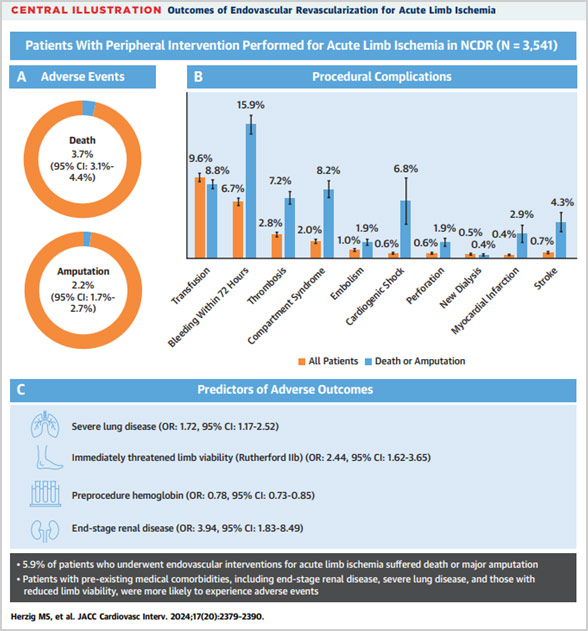Contemporary practice patterns and outcomes of endovascular revascularisation of acute limb ischemia
Selected in JACC: Cardiovascular Interventions by Jana Hammoud
This review examines outcomes of endovascular treatment for acute limb ischemia (ALI) using data from a multicenter national registry. It found that patients with pre-existing comorbidities and poor limb viability were more likely to experience adverse outcomes, including mortality and major amputation.
References:
Authors: Matthew S. Herzig, Kevin F. Kennedy, Beau M. Hawkins, and Eric A. Secemsky
Reference: J Am Coll Cardiol Intv. 2024 Oct, 17 (20) 2379–2390
DOI: 10.1016/j.jcin.2024.09.010
Read the abstractObjectives:
The objective was to assess contemporary outcomes following endovascular treatment of ALI in a broad, nationwide, multicenter peripheral vascular registry.
Study:
Retrospective multicentric scanning of the National Cardiovascular Data Registry Peripheral Vascular Intervention Registry between 2014 and 2020 for patients with ALI who underwent PVI and the outcome of this treatment.
Population:
3,541 patients were identified with ALI who had PVI and a viability between Rutherford I and IIB
Endpoints:
Primary endpoint was a composite of all-cause mortality and major amputation during index hospitalisation.
Outcomes and conclusion:
Patients with pre-existing medical comorbidities and those with diminished limb viability were more likely to suffer adverse outcomes.

Get the latest clinical cases and breaking news delivered straight to your inbox!


Comments:
This publication review examines outcomes of endovascular treatment for acute limb ischemia (ALI) using data from a national registry. The study found that patients with pre-existing comorbidities and lower limb viability had higher rates of mortality and major amputation.